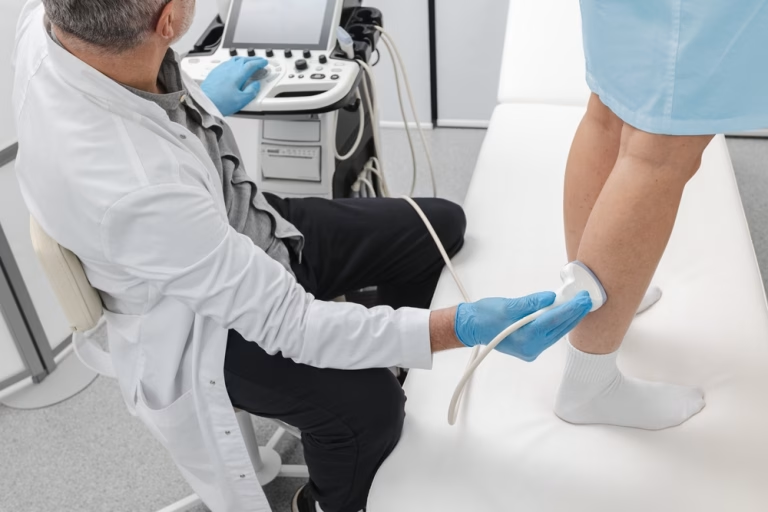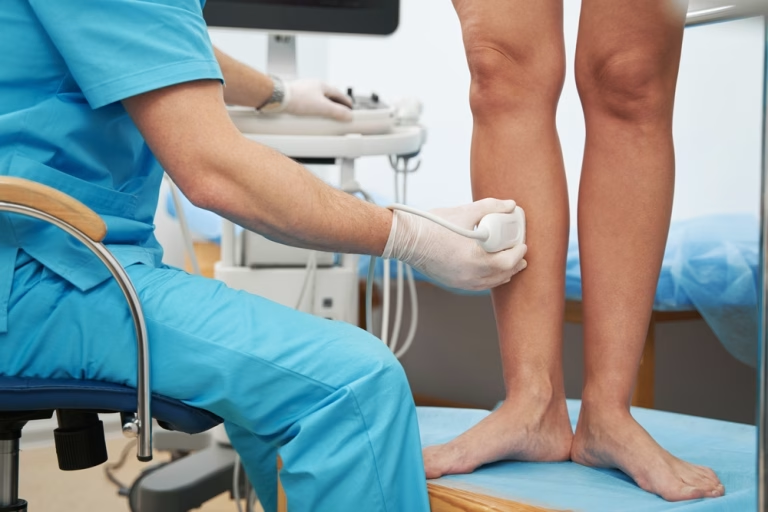Vein health isn’t just determined by genetics or age. It’s also deeply influenced by the environment around us. The temperature, humidity, air pressure, and even how much daylight we get all play an active role in determining how our veins will respond. These factors, though often overlooked, can play a significant role in how veins function and how comfortable (or uncomfortable) someone with a venous condition feels.
Let’s take a deeper look into how different seasons and environmental conditions affect your veins, and what you can do to protect your vascular health throughout the year.
The Biology of Vein Function
To understand how external factors impact vein health, it’s helpful to start with the basics.
Veins are blood vessels that return deoxygenated blood back to the heart. They contain one-way valves that prevent blood from flowing backward. In the legs, where veins work against gravity, this is especially important.
When these valves are weakened or the walls of the veins are stretched out, a condition known as venous insufficiency, blood begins to pool. This leads to symptoms like:
- Swelling in the ankles or feet
- A feeling of heaviness or fatigue in the legs
- Itchy or dry skin over the veins
- Aching or throbbing pain
- Visible varicose or spider veins
Now that we understand the function of veins and what happens when they malfunction, we can explore how the seasons affect them and whether or not varicose or spider vein treatment in New Britain or elsewhere is necessary
How Summer Heat Affects Vein Health
In this case, it’s right around the corner. Hot weather causes blood vessels to dilate as the body tries to cool itself. For people with healthy veins, this process isn’t a problem. However, for those with compromised venous systems, dilated veins can allow more blood to pool, especially in the lower extremities.
This explains why symptoms of vein conditions often worsen during the summer. Swelling increases, legs may feel heavy or achy, and visible veins can become more prominent.
What You Can Do in Summer:
- Stay Cool: Spend time in air-conditioned spaces and avoid excessive sun exposure.
- Hydrate Often: Adequate hydration keeps blood flowing smoothly.
- Use Compression Stockings: These help push blood back up to the heart, especially during long periods of standing or sitting.
- Exercise Regularly: Low-impact movement like swimming or walking improves circulation and helps veins work more efficiently.
Winter and Vein Health: A Complex Relationship
Many people assume that winter is automatically better for vein conditions. While it’s true that colder temperatures cause veins to constrict, which can reduce visible swelling and make varicose veins appear less pronounced.
However, cold weather also brings its own set of challenges:
- Reduced Physical Activity: People often move less in winter, which negatively impacts circulation.
- Dehydration: In cold weather, we often drink less water without realizing it.
- Dry Skin and Irritation: This can exacerbate itching and discomfort around affected veins.
Moreover, venous insufficiency doesn’t “go away” in the winter. Even if symptoms seem less noticeable, the underlying condition persists and may even worsen without proper care.
What You Can Do in Winter:
- Stay Active Indoors: Even short walks or light yoga at home can help circulation.
- Wear Compression Garments: Cold weather is a great time to wear these discreetly under clothing.
- Stay Moisturized: Dry winter air can cause skin irritation around veins, so regular moisturizing helps.
- Drink Water: Don’t let the lack of heat fool you. Hydration is always key.
The Role of Humidity and Barometric Pressure
It’s not just temperature that affects vein function. Atmospheric conditions such as humidity and barometric pressure also have an impact.
High Humidity: Makes it harder for sweat to evaporate, which interferes with the body’s cooling system. This can cause veins to stay dilated longer, increasing the risk of pooling blood.
Low Pressure Systems: These are often associated with stormy or changing weather and may cause veins to expand slightly. For some, this results in increased discomfort or a “heavy legs” sensation.
People who live in coastal or tropical climates with consistently high humidity may find that their venous symptoms are more persistent or severe than those in drier areas.
Air Travel, Altitude, and Vein Risk
Another environmental condition to consider is altitude. Flying or being at a high elevation can affect blood flow and pressure in the body.
Sitting for long periods, such as during air travel, increases the risk of blood pooling in the legs. For people with venous insufficiency or clotting disorders, this can lead to complications like deep vein thrombosis (DVT) that would require the services of a vascular surgeon in Manchester, CT and beyond.
Air Travel Tips:
- Move Regularly: Walk the aisle every hour or flex your legs in your seat.
- Wear Compression Socks: These are especially useful on long flights.
- Stay Hydrated and Avoid Alcohol: Dehydration thickens the blood, which raises the risk of clotting.
Light Exposure and Physical Activity
Seasons also influence how much natural light we receive. Less sunlight during the fall and winter months can impact mood and motivation, often leading to a decrease in physical activity. A sedentary lifestyle is one of the major contributors to poor vein health.
Low light exposure can also disrupt sleep patterns and hormone levels, which in turn may affect inflammation and vascular tone.
Environmental Pollutants and Toxins
Finally, environmental pollutants such as heavy metals, smoke, and chemicals may damage the inner lining of blood vessels over time. While research is ongoing, there’s evidence to suggest that chronic exposure to toxins can contribute to systemic inflammation and worsen existing vein conditions.
While it’s difficult to eliminate exposure entirely, especially in urban settings, taking steps like using air purifiers, avoiding smoking, and eating antioxidant-rich foods can help support overall vascular health.
Supporting Your Veins Year-Round
Your veins are sensitive to the world around you, and staying aware of how your environment affects them is one of the best ways to manage existing conditions and prevent future problems.
A year-round vein health plan might include:
- Wearing compression stockings regularly, not just when symptoms appear
- Scheduling walks and staying active no matter the season
- Hydrating with water and eating a vein-friendly diet (rich in fiber, low in salt, full of flavonoids)
- Avoiding prolonged sitting or standing
- Moisturizing to prevent skin breakdown around vulnerable areas
If you notice visible veins, discomfort, or leg fatigue that seems to worsen in certain seasons, don’t ignore it. These could be signs of underlying venous insufficiency.
Taking the Next Step
Now that you know that your vein health is not static and that it changes with your environment, you can take action. By being proactive and attentive, you can protect your circulation, prevent complications, and live a more comfortable life regardless of the weather outside.
Recognizing the seasonal and environmental influences on vein health is a powerful first step. But real relief and healing often require personalized care from experts who understand the full spectrum of vein conditions.
If you’re experiencing symptoms or just want to understand your vascular health better, professional evaluation is key. That’s where we come in. Vanishing Veins offers advanced diagnostic tools and a range of minimally invasive treatments that can relieve symptoms and improve your quality of life. Whether your concerns are cosmetic or medical, the right guidance can help you feel more confident, comfortable, and in control. Contact us today to see how you can take an advanced approach to your vein health.



